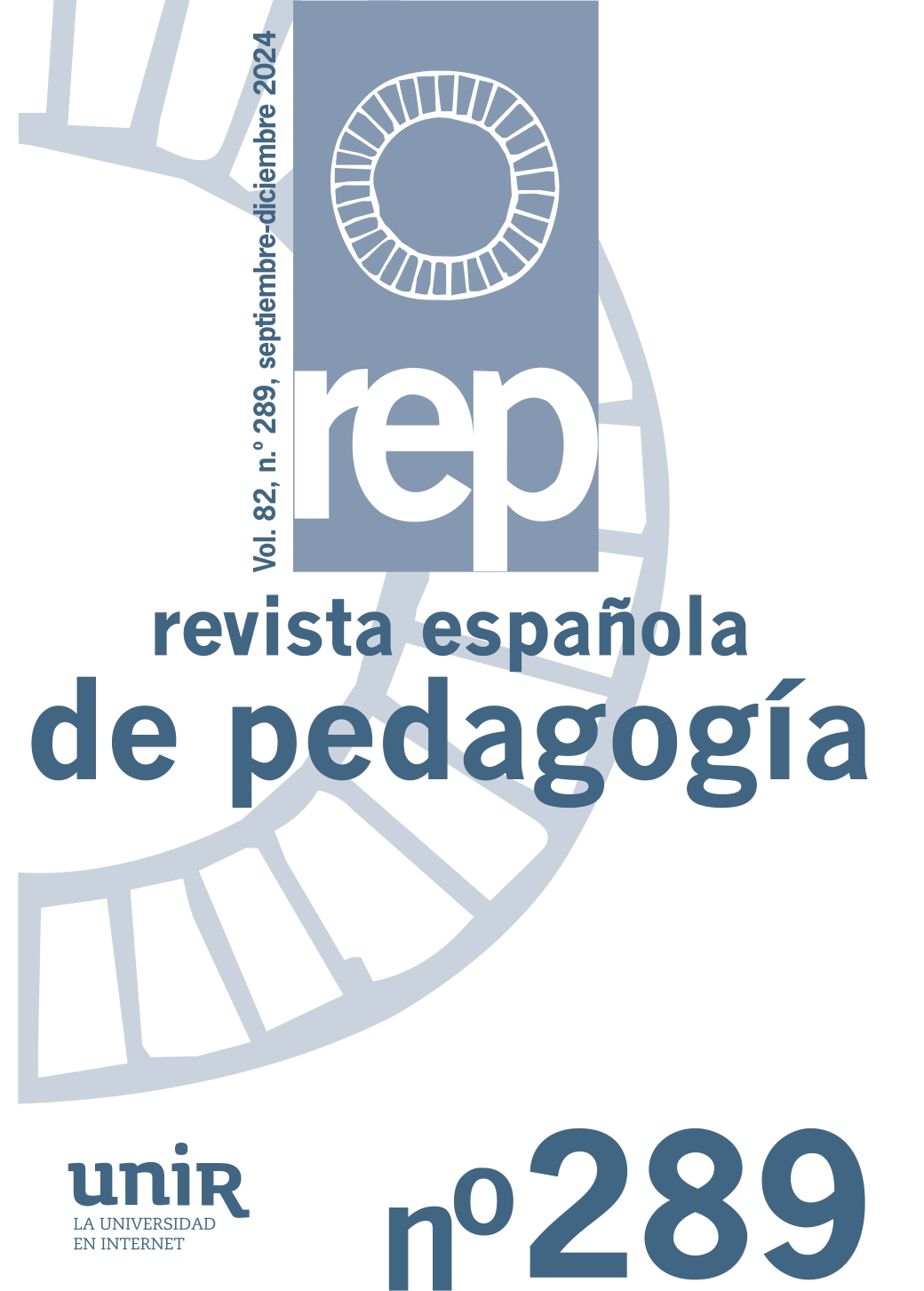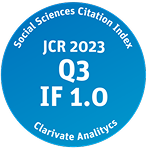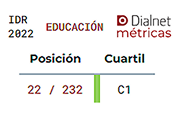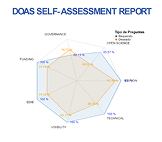Teaching pro-environmental rules: Implications for environmental education and climate change.
DOI:
https://doi.org/10.22550/2174-0909.4175Keywords:
verbal regulation, environmental education, pro-environmental behaviour, universal grammar, rules-governed behaviourAbstract
The concern regarding the gap between words and actions has spread through different contexts, in particular those relating to environmental education. Despite repeated warnings about the damaging impact of human behaviour on the environment and the effect of actions undertaken to teach people to protect the environment (pro-environmental behaviours), there have been few advances in relation to favourable responses from people’s actions. The alternatives proposed in environmental education to reduce this gap include research relating to teaching pro-environmental rules and its impact on human behaviour. Rule learning poses challenges for the comprehension of human behaviour, especially for environmental education in general and climate change in particular as well as being proposed as an epistemological and theoretical approach to human behaviour insofar as it differs from the established approach in physiological, medical, attitudinal, cognitive, or motivational mediation models that explain behaviour on the basis of factors that are internal to the individual. This article discusses the origins of verbal, genetic, and environmental behaviour [Chomsky (1959) vs. Skinner (1957, 1981)] with regards to its origin and development in ontogenesis. Afterwards, it considers the notion of rule-governed behaviour with the definitions and different taxonomies that have been proposed regarding rules, as well as the variables associated with (in) sensitivity to following them and the possible alternative approaches for each of the (in)sensitivity factors identified. Finally, it analyses the role of education in pro-environmental rules for regulating people’s own behaviour and in the design of macro- and metacontingencies to incentivise environmental protection in large human groups.
Downloads
References
Alcock, J. (2003). The triumph of sociobiology [El triunfo de la sociobiología]. Oxford.
Álvarez-González, C. J. (2010). La relación entre lenguaje y pensamiento de Vigotsky en el desarrollo de la psicolingüística moderna. RLA, Revista de Lingüística Teórica y Aplicada, 48 (2), 13-32. https://dx.doi.org/10.4067/S0718-48832010000200002
Bandura, A., y Walters, R. H. (1959). Adolescent aggression: A study of the influence of child-training practices and family interrelationships [Agresión adolescente: un estudio de la influencia de las prácticas de educación infantil y de las interrelaciones familiares]. Ronald.
Baum, W. M. (2017). Understanding behaviorism: Behavior, culture, and evolution [Comprender el conductismo: comportamiento, cultura y evolución]. John Wiley & Sons.
Bermúdez, J. (2021). ¿Por qué incumplimos la ley? Carta a un joven estudiante. Ariel.
Broadbent, D. E. (1958). The selective nature of learning [El carácter selectivo del aprendizaje]. En D. E. Broadbent, Perception and communication [Percepción y comunicación] (pp. 244-267). Pergamon Press.
Catania, A. C. (2003). Verbal governance, verbal shaping, and attention to verbal stimuli [Gobierno verbal, moldeamiento verbal y atención a estímulos verbales]. En K. A. Lattal, y P. N. Chase (Eds.), Behavior theory and philosophy [Teoría y filosofía del comportamiento] (pp. 301-321). Springer US.
Cerutti, D. T. (1989). Discrimination theory of rule-governed behavior [Teoría de la discriminación del comportamiento regido por normas]. Journal of the experimental analysis of behavior, 51 (2), 259-276.
Chawla, L., y Derr, V. (2012). The development of conservation behaviors in childhood and youth [El desarrollo de conductas de conservación en la infancia y la juventud]. En Susan D. Clayton (Ed.), The Oxford handbook of environmental and conservation psychology [Manual Oxford de psicología ambiental y de la conservación] (pp. 527-555). Oxford University Press.
Chomsky, N. (1959). A review of B. F. Skinner’s Verbal behavior [Una revisión de Conducta verbal, de B. F. Skinner]. Language, 35 (1), 26-58.
Cialdini, R. B., Reno, R. R., y Kallgren, C. A. (1990). A focus theory of normative conduct: Recycling the concept of norms to reduce littering in public places [Una teoría focalizada de la conducta normativa: reciclar el concepto de norma para reducir el vertido de basura en lugares públicos]. Journal of Personality and Social Psychology, 58 (6), 1015-1026.
Corraliza, J. A., y Collado, S. (2011). La naturaleza cercana como moderadora del estrés infantil. Psicothema, 23 (2), 221-226.
De la Fuente, J. (2017). Theory of self- vs. externally-regulated learningTM: Fundamentals, evidence, and applicability [Teoría del autoaprendizaje frente al aprendizaje regulado de forma externa: fundamentos, pruebas y aplicabilidad]. Frontiers in Psychology, 8, 1675.
De la Fuente, J., González-Torres, M. C., Aznárez-Sanado, M., Martínez-Vicente, J. M., Peralta-Sánchez, F. J., y Vera, M. M. (2019). Implications of unconnected micro, molecular, and molar level research in psychology: The case of executive functions, self-regulation, and external regulation [Implicaciones de la investigación inconexa a nivel micro, molecular y molar en psicología: el caso de las funciones ejecutivas, la autorregulación y la regulación externa]. Frontiers in Psychology, 10, 1919.
Gifford, R. (2011). The dragons of inaction: Psychological barriers that limit climate change mitigation and adaptation [Los dragones de la inacción: barreras psicológicas que limitan la mitigación y adaptación al cambio climático]. American Psychologist, 66 (4), 290-302.
Glenn, S. S. (1988). Contingencies and metacontingencies: Toward a synthesis of behavior analysis and cultural materialism [Contingencias y metacontingencias: hacia una síntesis del análisis de la conducta y el materialismo cultural]. The Behavior Analyst, 11 (2), 161-179.
Glenn, S. S. (1991). Contingencies and metacontingencies: Relations among behavioral, cultural, and biological evolution [Contingencias y metacontingencias: relaciones entre la evolución conductual, cultural y biológica]. En P. A. Lamal (Ed.), Behavioral analysis of societies and cultural practices [Análisis del comportamiento de las sociedades y las prácticas culturales] (pp. 39–73). Hemisphere Publishing Corp.
Glenn, S. S. (2003). Selección en dos niveles en la evolución de la ciencia. Revista Latinoamericana de Psicología, 35 (3), 281-288.
Glenn, S. S. (2004). Individual behavior, culture, and social change [Comportamiento individual, cultura y cambio social]. The Behavior Analyst, 27 (2), 133-151.
Glenn, S. S., Malott, M. E., Andery, M. A. P. A., Benvenuti, M., Houmanfar, R. A., Sandaker, I., Todorov, J. C., Tourinho, E. Z., y Vasconcelos, L. A. (2016). Toward consistent terminology in a behaviorist approach to cultural analysis [Hacia una terminología coherente en un enfoque conductista del análisis cultural]. Behavior and Social Issues, 25 (1), 11-27.
Gómez, I., Moreno, E., y López, N. (2006). Sensibilidad a unas u otras contingencias en el marco de la conducta gobernada por reglas. Plaza y Valdés.
GramaPsico. (2023, 3 de mayo) LANGUAGE and VERBAL BEHAVIOR II ~ NOAM CHOMSKY and CHARLES CATANIA #110 [Lengua y comportamiento verbal II ~ Noam Chomsky y Charles Catania] [Vídeo]. YouTube. https://www.youtube.com/watch?v=9bwLMXob-AI&-t=2299s&ab_channel=enGramaPsico%-CE%A8
Gutiérrez, G. (2005). I. P. Pavlov: 100 años de investigación del aprendizaje asociativo. Universitas Psychologica, 4 (2), 251-255.
Harte, C., Barnes-Holmes, D., Barnes-Holmes, Y., y Kissi, A. (2020). The study of rule-governed behavior and derived stimulus relations: Bridging the gap [El estudio del comportamiento regido por reglas y las relaciones de estímulo derivadas: salvando las distancias]. Perspectives on Behavior Science, 43 (2), 361-385.
Hayes, S. C., Barnes-Holmes, D., y Roche, B. (Eds.). (2001). Relational frame theory: A post-Skinnerian account of human language and cognition [Teoría del marco relacional: una explicación postskinneriana del lenguaje y la cognición humanos]. Springer Science & Business Media.
Kissi, A., Hughes, S., Mertens, G., Barnes-Holmes, D., De Houwer, J., y Crombez, G. (2017). A systematic review of pliance, tracking, and augmenting [Una revisión sistemática del acatamiento, el seguimiento y el aumento]. Behavior modification, 41 (5), 683-707.
Lieberman, P. (1998). Eve spoke: Human language and human evolution [Eva habló: lenguaje humano y evolución humana]. WW Norton.
Luria, A. R. (1961). The role of speech in the regulation of normal and abnormal behavior [El papel del habla en la regulación del comportamiento normal y anormal]. Liveright.
MacCorquodale, K. (1969). B. F. Skinner’s Verbal behavior: A retrospective appreciation [Comportamiento verbal, de B. F. Skinner: una apreciación retrospectiva]. Journal of the experimental analysis of behavior, 12 (5), 831-841.
Marler, P., y Terrace, H. S. (Eds.) (1984). The biology of learning: Report of the Dahlem Workshop on the Biology of Learning, Berlin 1983, October 23-28 [La biología del aprendizaje: informe del Chalem Workshop sobre biología del aprendizaje, Berlín, 23-28 de octubre de 1983]. Springer-Verlag.
Midgley, M. (1978). Beast and man: The roots of human nature [Bestia y hombre: las raíces de la naturaleza humana]. Cornell University Press.
Neisser, U. (1967). Cognitive psychology [Psicología cognitiva]. Appleton-Century-Crofts.
Panadero, E. (2017). A review of self-regulated learning: Six models and four directions for research [Una revisión del aprendizaje autorregulado: Seis modelos y cuatro líneas de investigación]. Frontiers in Psychology, 8, 422. https://doi.org/10.3389/fpsyg.2017.00422
Páramo, P. (2010). Aprendizaje situado: creación y modificación de prácticas sociales en el espacio público urbano. Psicologia & Sociedade, 22 (1), 130-138.
Páramo, P. (2013). Comportamiento urbano responsable: las reglas de convivencia en el espacio público. Revista Latinoamericana de Psicología, 45 (3), 473-485. http://dx.doi.org/10.14349/rlp.v45i3.1488
Páramo, P. (2017). Reglas proambientales: una alternativa para disminuir la brecha entre el decir-hacer en la educación ambiental. Suma psicológica, 24 (1), 42-58. https://doi.org/10.1016/j. sumpsi.2016.11.001
Páramo, P., y Burbano, A. (2019). Gramática espacial urbana: la orientación espacial guiada por reglas verbales. Psicogente, 22 (41), 308-332. https://doi.org/10.17081/psico.22.41.3313
Páramo, P., Burbano, A., Ojeda, G., y Angulo, E. (En prensa). La señalética urbana orientada a la convivencia. Revista de Arquitectura (Bogotá).
Peláez, M., y Moreno, R. (1999). Four dimensions of rules and their correspondence to rule-governed behavior: A taxonomy [Cuatro dimensiones de las normas y su correspondencia con el comportamiento regido por normas: una taxonomía]. Behavioral Development Bulletin, 8 (1), 21-27.
Piaget, J. (1978). La equilibración de las estructuras cognitivas, problema central del desarrollo. Siglo XXI.
Pietras, C. J. (2022). Rule-governed behavior and climate change: Why climate warnings fail to motivate sufficient action [Comportamiento regido por normas y cambio climático: por qué las advertencias climáticas no motivan una acción suficiente. Behavior and Social Issues, 31 (1), 373-417. https://doi.org/10.1007/s42822-022-00109-y
Pinker, S (2007). The language instinct: How the mind creates language [El instinto del lenguaje: cómo la mente crea el lenguaje]. Harper Perennial Modern Classics.
Pinker, S (2021). Racionalidad: qué es, por qué escasea y cómo promoverla. Paidós.
Ribes, E. (2000). Instructions, rules, and abstraction: A misconstrued relation [Instrucciones, reglas y abstracción: una relación mal entendida]. Behavior and philosophy, 28 (1-2), 41-55.
Sauter, D. A., Eisner, F., Ekman, P., y Scott, S. K. (2010). Cross-cultural recognition of basic emotions through nonverbal emotional vocalizations [Reconocimiento transcultural de emociones básicas mediante vocalizaciones emocionales no verbales]. Proceedings of the National Academy of Sciences, 107 (6), 2408- 2412. https://doi.org/10.1073/pnas.0908239106
Seligman, M. E., y Hager, J. L. (1972). Biological boundaries of learning [Límites biológicos del aprendizaje]. Appleton Century Crofts.
Skinner, B. F. (1938). The behavior of organisms: An experimental analysis [El comportamiento de los organismos: un análisis experimental]. B. F.
Skinner Foundation. Skinner, B. F. (1953). Science and human behavior [Ciencia y comportamiento humano]. The Free Press.
Skinner, B. F. (1986). The evolution of verbal behavior [La evolución del comportamiento verbal]. Journal of the Experimental Analysis of Behavior, 45, 115-122. https://doi.org/10.1901/jeab.1986.45-115
Skinner, B. F. (Ed.) (1981). Conducta verbal. Editorial Trillas.
Thaler, R., y Sunstein, C. (2008). Nudge: Improving decisions about health, wealth, and happiness [Pequeño empujón: mejorar las decisiones sobre salud, riqueza y felicidad]. Penguin Books.
Tomasello, M. (2016). A natural history of human morality [Historia natural de la moral humana]. Harvard University Press.
Vygotsky, L. S. (1986). Thought and language [Pensamiento y lenguaje]. MIT Press.
Wilson, E. O. (2012). La conquista social de la Tierra. Debate.
Wilson, E.O. (2000). Sociobiology: The new synthesis [Sociobiología: la nueva síntesis]. Harvard University Press.
Zimmerman, B. J. (2008). Investigating self-regulation and motivation: Historical background, methodological developments, and future prospects [Investigación de la autorregulación y la motivación: antecedentes históricos, avances metodológicos y perspectivas de future]. American educational research journal, 45 (1), 166- 183.
Downloads
Published
-
Abstract331
-
PDF (Español)63
-
PDF61
How to Cite
Issue
Section
License

This work is licensed under a Creative Commons Attribution-NonCommercial 4.0 International License.

